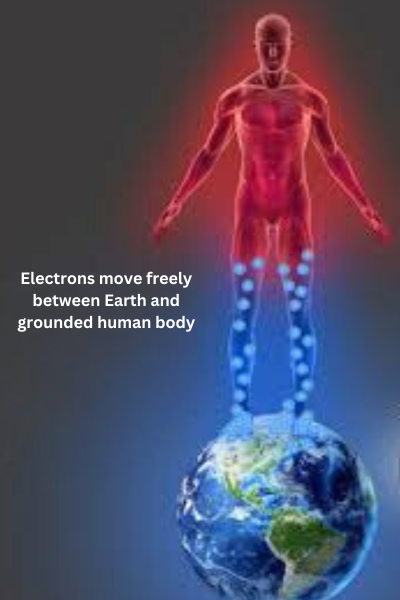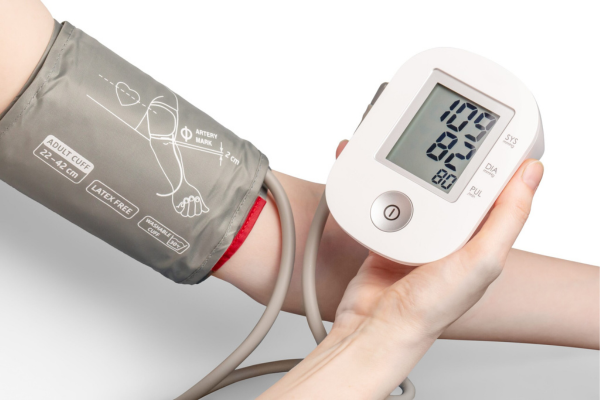The practice of earthing, also known as grounding, has sparked considerable interest in the wellness community and among health researchers. This natural health concept involves direct skin contact with the earth's surface, such as walking barefoot, to absorb the earth's electrons.
Advocates of earthing claim it offers numerous health advantages, including the reduction of inflammation. But what does scientific evidence reveal about these claims? Let's delve into the details.
Understanding the Science Behind Earthing

Earthing is predicated on the idea that the earth possesses a negative electrical potential on its surface. By making direct contact with the ground, it's believed that your body can equalize with the earth's energy, potentially leading to beneficial physiological changes. This effect on grounding the human body may help stabilize the electrical environment of organs, tissues, and cells.
Electronics and Their Impact on the Human Body
Our modern lifestyle is deeply intertwined with electronic devices that emit electromagnetic fields (EMFs), which are a type of radiation. These devices range from smartphones to Wi-Fi routers.

Research has shown that prolonged exposure to EMFs may lead to health issues like sleep disturbances and an increased risk of certain cancers. Earthing may counteract the artificial electrical charges these devices induce in our bodies.
The Link Between Earthing and Inflammation
Chronic inflammation can cause various health problems. Earthing's potential impact on inflammation is based on the antioxidant properties of electrons from the earth, which may neutralize damaging free radicals. Imaging techniques have shown that earthing might have a calming effect on inflammation, evidenced by decreased redness and heat.
Earthing's Influence on Hypertension and Blood Pressure

Hypertension, or high blood pressure, can lead to severe health issues. Earthing research has also looked into grounding's effects on blood pressure. Early findings suggest that earthing could improve blood pressure by enhancing blood flow and reducing blood viscosity.
Analyzing the Evidence: Studies and Findings
While earthing is a compelling concept, it's essential to examine it through a scientific lens. Some studies have reported that earthing led to decreased pain and better sleep. However, much of the research is preliminary, and more extensive, controlled studies are needed.
For instance, a study in the Journal of Alternative and Complementary Medicine titled "The effects of grounding (earthing) on inflammation, the immune response, wound healing, and prevention and treatment of chronic inflammatory and autoimmune diseases" showed improvements in sleep and pain among participants using grounded sleep aids.
Another study in the Journal of Environmental and Public Health reported similar positive outcomes. These studies are encouraging but represent the beginning of our understanding of earthing's benefits.
Practical Ways to Practice Earthing
Incorporating earthing into your life can be simple:
- Outdoor Grounding: Walk barefoot on natural surfaces like grass or sand for at least 30 minutes daily.

- Grounding Mat: Use a grounding mat indoors to simulate the earth's charge while you work or rest.
- Grounding Sleepwear: Consider grounding sheets or sleepwear to connect with the earth's energy overnight.
- Gardening: Engage in gardening to make contact with the soil and enjoy a stress-relieving activity.

It's important to view earthing as part of a holistic lifestyle approach, alongside a balanced diet and regular exercise. Always consult with a healthcare provider before starting new health practices.
Final Thoughts on Earthing and Inflammation
The question of earthing's role in reducing inflammation remains an active area of research. While anecdotal evidence and preliminary studies suggest potential benefits, the scientific community is still investigating the effects of grounding. As with any health practice, professional medical advice is recommended before making significant changes to your health routine.
In conclusion, the concept of earthing offers a fascinating possibility for reducing inflammation and improving conditions like hypertension. Ongoing research will hopefully provide a clearer picture of how connecting with the earth can enhance our health.
FAQ's on Earthing Help with Inflammation
How does earthing science work?
Earthing science is based on the idea that the Earth has an infinite and naturally occurring supply of electrons that can be absorbed through direct contact with the Earth's surface. This contact can be made through barefoot walking, sitting, or sleeping on the ground, or by using an earthing device such as a grounding mat or sheet.
The theory is that these electrons are absorbed through the skin and travel through the body, neutralizing free radicals and reducing inflammation. This can help to reduce stress, improve sleep, reduce pain, and improve overall health.
What are the potential effects of electronic devices on the human body?
The potential effects of electronic devices on the human body depend on the type of device and the amount of exposure. Generally, electronic devices emit electromagnetic radiation, which can cause a range of health issues such as headaches, fatigue, and insomnia.
Long-term exposure to radiation from electronic devices can also increase the risk of cancer, reproductive issues, and neurological disorders. Additionally, the blue light emitted from electronic devices can cause eye strain and disrupt the body's natural sleep-wake cycle.
How does earthing relate to inflammation in the body?
Earthing, also known as grounding, is the practice of connecting to the Earth's natural energy by walking barefoot on the ground or sitting on the ground. This connection has been found to reduce inflammation in the body by reducing the amount of free radicals in the body.
Free radicals are molecules that can cause damage to cells and tissues, leading to inflammation. By connecting to the Earth's energy, the body is able to absorb electrons from the Earth, which neutralize the free radicals and reduce inflammation.
What evidence is there to show that grounding can reduce inflammation?
Studies have shown that grounding can reduce inflammation by reducing oxidative stress and improving antioxidant levels in the body. It has also been shown to reduce pain and improve sleep quality. Additionally, grounding has been shown to reduce cortisol levels, which can help reduce inflammation.
Is there any connection between earthing and hypertension or high blood pressure?
Yes, there is evidence that earthing can help reduce hypertension or high blood pressure. Studies have shown that earthing can reduce inflammation, improve circulation, facial blood flow regulation, and reduce stress, all of which can help to lower blood pressure.
Additionally, earthing can help to balance the body's hormones, which can also help to reduce hypertension.
How reliable and comprehensive are the studies done on earthing?
The studies done on earthing are reliable and comprehensive. Earthing has been studied extensively in both laboratory and clinical settings, and the results have been consistent. The studies have shown that earthing can reduce inflammation, improve sleep, reduce stress, and improve overall health.
Additionally, the studies have also shown that earthing can reduce pain, improve circulation, delayed onset muscle soreness, and reduce the risk of cardiovascular disease.
Are there any practical ways to incorporate grounding into my daily routine?
Yes, there are several practical ways to incorporate grounding into your daily routine. One way is to take a walk outside barefoot on the grass or sand. This will allow you to connect with the Earth's energy and absorb its healing properties.
You can also practice yoga or meditation outdoors, or even just sit in a park and take in the natural environment. Additionally, you can purchase grounding mats or sheets that you can use indoors to connect with the Earth's energy.
What should I consider before starting to practice earthing?
Before starting to practice earthing, it is important to consider the environment you will be in. Make sure the ground you are connecting to is free of toxins, such as pesticides or other chemicals. Additionally, it is important to make sure the ground is dry and free of any sharp objects that could cause injury.
It is also important to consider the weather and temperature when earthing, as extreme temperatures can be dangerous. Finally, it is important to consider the length of time you will be earthing, as too much time can cause skin irritation.



